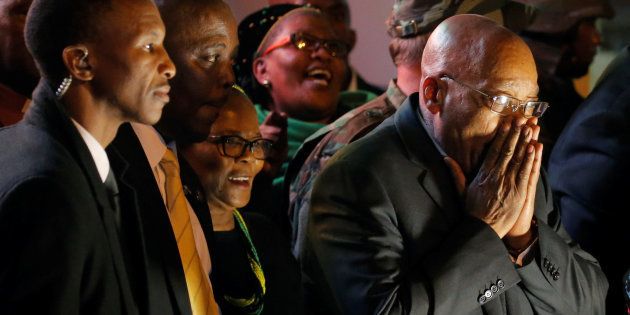
The original voting tally in the motion of no confidence originally was much closer than the final tally after 10 "no" votes were accidentally counted with the "yes" votes.
According to information obtained by HuffPost SA, confirmed by two sources who were in the room, observers and representatives of the ANC went deathly pale when the tally of 188 against the motion, 187 for the motion and nine abstentions were confirmed in room G26, behind the speaker's chair, where the counting was done.
"The ANC observers got a massive fright," one observer told HuffPost SA.
That meant that only one single vote separated the two sides. Order was however restored after a recount and 10 "no" votes were discovered among the "yes" votes. That constituted a 20 vote swing with the actual count certified and accepted with 198 "no" votes and 177 "yes" votes. Abstentions remained at nine.
Moloto Mothapo, Parliament's spokesperson, could not confirm events. "It is a confidential process. I don't have any insights into what exactly happened. But there were representatives of all parties and the final result wasn't disputed by anybody."
John Steenhuisen, the Democratic Alliance's chief whip, confirmed the incident but said the mistake was above board and all parties have accepted it.
He did however say the party will challenge Speaker Baleka Mbete's ruling that the threshold for the motion to be carried remains 201, even though there are six vacant seats in the house. He says every law governing parliamentary process points to the fact that an empty seat cannot count as a vote. "That means 394 divided by two, plus one [198], which makes it much closer," Steenhuisen said.
